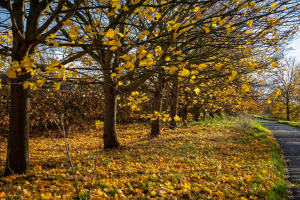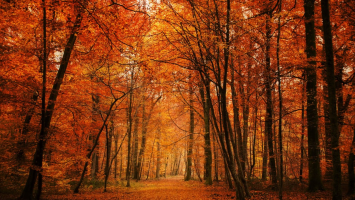However, trees then shed their leaves in the Autumn season to survive the harsh cold conditions of Winter. By the way, Autumn is often called Fall in the United States simply because leaves fall from the trees at that time. Shedding their leaves helps trees to conserve water and energy. If the leaves remained on the trees, the water in the leaves would freeze and burst in the Winter as the water turned to ice, and by the time Summer rolled round, the tree would have no working leaves left, so no means to create food. But with the old leaves fallen, there is room for new ones to grow in the Spring.

This leaf falling doesn't affect every tree. It happens to deciduous trees such as ash, beech, elm, cherry, oak, maple, willow and poplar.
Still, there are some trees which are known as 'evergreens.' As the name suggests, that means that their leaves are green all the time and they don't fall off. The reason for this is trees such as firs have a thick, waxy coating called a resin that protects their leaves. This means they don't freeze and rupture like other trees' leaves would when they get cold, so they don't need all of them to fall off and re-grow in time for Summer.
